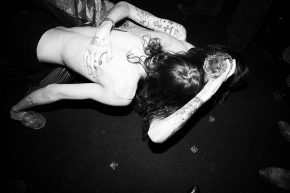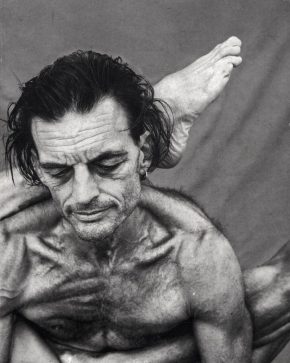As it faces the risk of vanishing due to gentrification, photographer Mark Seliger captures the vibrancy of Christopher Street – a place at the heart of New York’s LGBTQ identity
For many of us non-New Yorkers, Christopher Street is synonymous with the image of voguers congregating on its pier in Jennie Livingston’s documentary Paris is Burning. For those living in the city, its importance transcends the silver screen and for years the West Village street has been a central meeting place for the trans and queer community in NYC.
On Christopher Street: Transgender Stories is a new photo book that tells its story, photographed by Mark Seliger and published by Rizzoli. “I’ve always been intrigued by the life and theatre of Christopher Street,” Seliger explained in the book’s release. “I’ve noticed the photographic possibility out of the corner of my eye for the past couple of decades – an Ellis Island for freedom of expression and gender identity”. After calling the area home for two decades, it was the street’s rapid gentrification that made him take action. “More recently, I’ve noticed it vanishing. My interest in photo documentary led to the building of a series of portraits, which led to three summers of shooting”, he said, admitting that he wasn’t aware how central the stories of trans people would be to the project when he initially began. “At first I didn’t even realise I was shooting trans stories, just stories of people who found their way to Christopher Street. As I began to talk about this project, I realise that everybody has a trans story, that being trans is something that affects all of us.”
“I realise that everybody has a trans story, that being trans is something that affects all of us” – Mark Seliger
Sexual orientation and gender identity is endless on Christopher Street, from transgenders, transsexuals, non-binaries, genderqueers, femmes, butch, cross-dressers, drag kings and drag queens to pansexuals. And while earlier this year President Obama declared the area around the Stonewall Inn – home of the infamous 1969 riots – as the country’s “first national monument to tell the story of the struggle for LGBT rights”. Yet, as the neighbourhood has become increasingly middle-class, the general consensus towards the transgender and gay community has become less accepting and more hostile.
Featuring 74 photographs taken on Selinger’s Hasselblad camera alongside anecdotes from the people they depict, the photographer encourages his subjects to project their personal identity. Some look solemn, some seem sassy and some strike suggestive poses, but all of the people Seliger documents make a point of expressing their confidence in who they are. In turn, their personal stories enable their voice to be heard in an age where sexuality and gender are continually being challenged and reevaluated.


























Comments